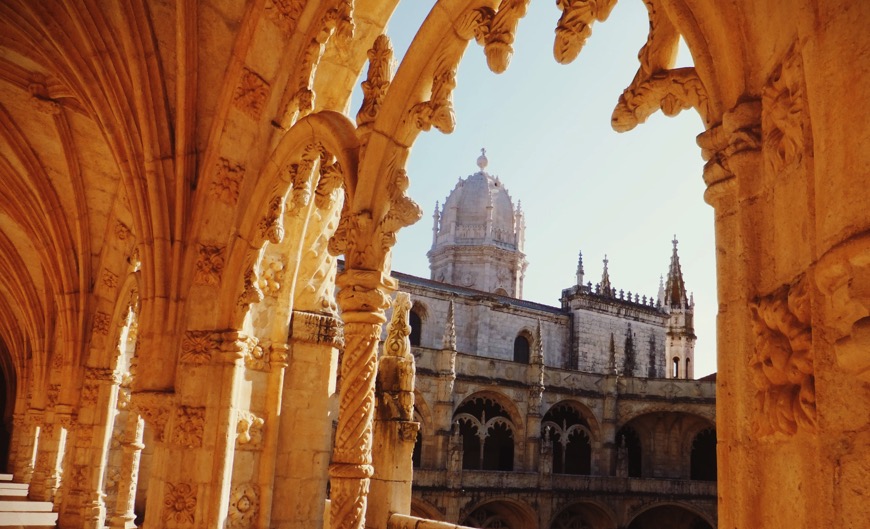On my fifth day as a solo woman traveller around Europe, I decided to visit the beautiful country of Portugal as a dream destination, to immerse myself in cultural experiences, get relaxed under the sunny weather, visit wineries and learn about Portuguese history.
As soon as I got my hotel room and received a tourism map of the city of Lisbon, I started visiting the Jerónimos Monastery that is ubicated near the Tagus river in the parish of Belém, in the Lisbon Municipality, Portugal. The Monastery is one of the most distinguished of the Portuguese Late Gothic Manueline style architecture in the capital and one of the main European churches. Indeed, the UNESCO formally designated the Hieronymites Monastery as a World Heritage Site in 1983.
Origins
Originally, King Manuel I of Portugal built a large monastery near the location where the Infante D.Henrique ordered a church to be built in the middle of the 15th century by invocation of St Mary of Belém. King Manuel decided to found the Monastery of St Mary of Belém in memory of the Infante, for his intense devotion and it was donated to the monks of the Order of St. Jerome. The monks provided assistance to Portuguese explorers who embarked on their world journeys from here.
It is believed that the famous explorer Vasco da Gama spent his last night here before starting on his expedition to discover the Orient. Today it is commonly known as the Jerónimos Monastery or Hieronymites Monastery. It is also interesting to mention that the famous “pastéis de nata” (custard tart in English) as a well known Portuguese dessert, was invented by monks of the Jerónimos Monastery. Its recipe remains top-secret from then to today.
Connection
Since my first step inside of this Celestial Monastery, I found a deep connection of peace and serenity as if the building had personality. I closed my eyes for a moment and got barefoot and then instantly got trapped in its past, history and culture. I continued walking along beautiful arches with complex sculptural themes incorporating maritime themes: coils of rope, coral, sea monsters and other sea patterns that evoke that time of world exploration at sea.
I went into a chapel where I found the sepulchre for heroes and poets: Vasco da Gama and Luis da Camoes. Then I prayed from the bottom of my heart that the world prospers and evolves as a peaceful and healthy place to live.
As you can walk to its ways, you can see that several sculptors left their mark in this beautiful Monastery as Nicolau Chanterene who added depth with his Renaissance themes, while the architect Diogo da Torralva added the main chapel and the choir.
My pick
As a tourist and visitor I felt in love with this religious building that radiates calm and ease. A day visit will leave you with a feeling of peace and tranquillity. Make sure you allow at least half a day to visit this historic Monastery. When I visited it, I was wearing comfortable shoes as I spent three hours wandering down its paths and checking out the various ceilings, sculptures, paints and carpets.
An English-speaking tour guide is also available for hire on-site. The entry cost is €10 and I recommend buying your ticket there directly. Whilst leaving you can make a donation as well to help maintain the building.
There are more attractions around the Jerónimos Monastery such as the Belém Tower and the National Archaeology Museum that I recommend to visit. Altogether, it will take you one day to visit them and you can combine the three tickets in one for €16.
I hope this Blog is satisfactory and motivates you enough to start planning a trip to Lisbon.

